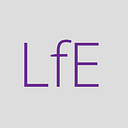Introduction to the Library and How to Search
R22–0963 Parts 1, 2, & 3
Materials for the session: Slides, smart-phones (provided by participants).
Length of session: 60 minutes
Cohort: Interns as part of a re-introduction to academic practice
Session outline: (and slides 1–2)
To introduce the library and particularly the online resources to the group.
Talk through how to use the library databases to search a research question.
Slides 3–4
Introduce the question and the jamboard (how to use). Suggest that before searching, students need to understand the question to determine which terms to search. If a broad question, what might you impose as limits to the topic, or what might you like to focus on?
Slide 5–6
Point out that not every author will use the same words in exactly the same way. When searching it is a good idea to generate a list of synonyms for what you take to be your key words. These can then be combined in various ways by using AND/OR/NOT. (This can also be demonstrated on the library search webpage).
AND — will limit
OR — will expand
NOT — will exclude
Slides 7–8
Suggest that any kind of searching requires a strategy, not just in terms of the words and thinking about synonyms (and keeping a check when reading the articles, how ideas/concepts etc have been named), but also in terms of keeping a log of what has been searched, and what was returned. It is likely that the searching will take place over an extended period of time, so important to keep track of the searches so you can return to articles, and equally, not waste time repeating searches.
Before beginning searching, have a think about the ‘WHAT’, ‘WHERE’ and ‘HOW’ to plan a rough road-map of your proposed search. This is adaptable as you go! But does help you, not only to get started, but also to focus your efforts.
Part of the ‘WHAT’ should be about ensuring there is a variety of sources used, so you might want to use different databases for different sources. For example, some databases will only search journal articles, whereas library search will return books and conference proceedings also.
Slides 9- Activity
Asks participants to use the QR code or the bitly link to volunteer where they currently search.
Talk around the answers, particularly highlighting those databases which are subject-specific as preferable to Google Scholar.
Slide 10–17:
Work through each of the databases available from the Library, and the benefits/drawbacks of each. This is relates to the ‘WHERE’ of the search strategy.
Slides 18–20
Very important that once sources have been gathered, you then analyse them! Really no point in referencing sources, or plonking them in an assignment and leaving them to their own devices. Don’t do this! For any source, you will need to think about, how reliable it is: for example, is it, as a baseline, peer-reviewed? Have the authors any investments in a particular outcome? Has the article been funded by a company? If so, how far can you then trust the conclusions? Part of the analysis is then also thinking about the relevance of the source — does it help you answer the question you are researching? If not, don’t include it! Analysis is also about deciding about what to keep out, as much as what to keep in.
Concluding slides
Solicit the participants to reflect on what next steps they will take (Slide 22). Discuss this, and where applicable, use the final slides to signpost to further support from the Library.
PART 2 — How to read a paper
Materials for the session: slides, smart-phones (provided by participants), scientific journal article (this can be swapped out for one applicable to the cohort).
Length of session: 60 minutes
This is a fairly didactic session on how to critically take apart a scientific paper. It takes the students through what to do before, during and after reading, as well as what to do with numbers, before asking the students to practice this for themselves.
Key things to remember here are to think through with the students not to take any claims at face-value, but to interrogate the claims. If they can carry out the statistical tests themselves, encourage them to do so. Likewise, just because numbers and stats have been used, doesn’t automatically make them true.
Aside from looking in detail at the claims of the article, questions to ask of the article overall are whether the results of the study/experiment are justified, and if the approach matched the research question.
PART 3 — Poster Session
Materials: Slides
Length of session: 90 minutes, online
This session takes the students through how to create a poster of their internship experience, which is their assignment to conclude the course. Previous examples are available on the internship website.
The assignment asks the students to critically reflect on an aspect (or two) of the internship and create a poster and presentation which is then delivered online to the rest of the cohort.
Although the assignment is about personal experience, reflective models and evidence can still be drawn upon. Likewise, it is important also to think about the outcomes and implications of the experiences the student has chosen to talk about in their presentation, for example, next steps which could be applying for a PhD, joining a research team or writing a journal article.
Key things to think through with the students are how to critically reflect, how to develop a poster, and how to use the poster as a visual aid for their verbal presentation.
Skills to develop: how to distill information, how to engage an audience and give a clear presentation, how to reflect critically (using a model, if helpful).
